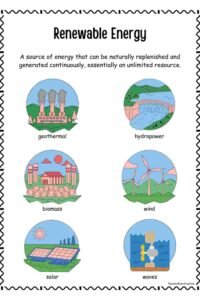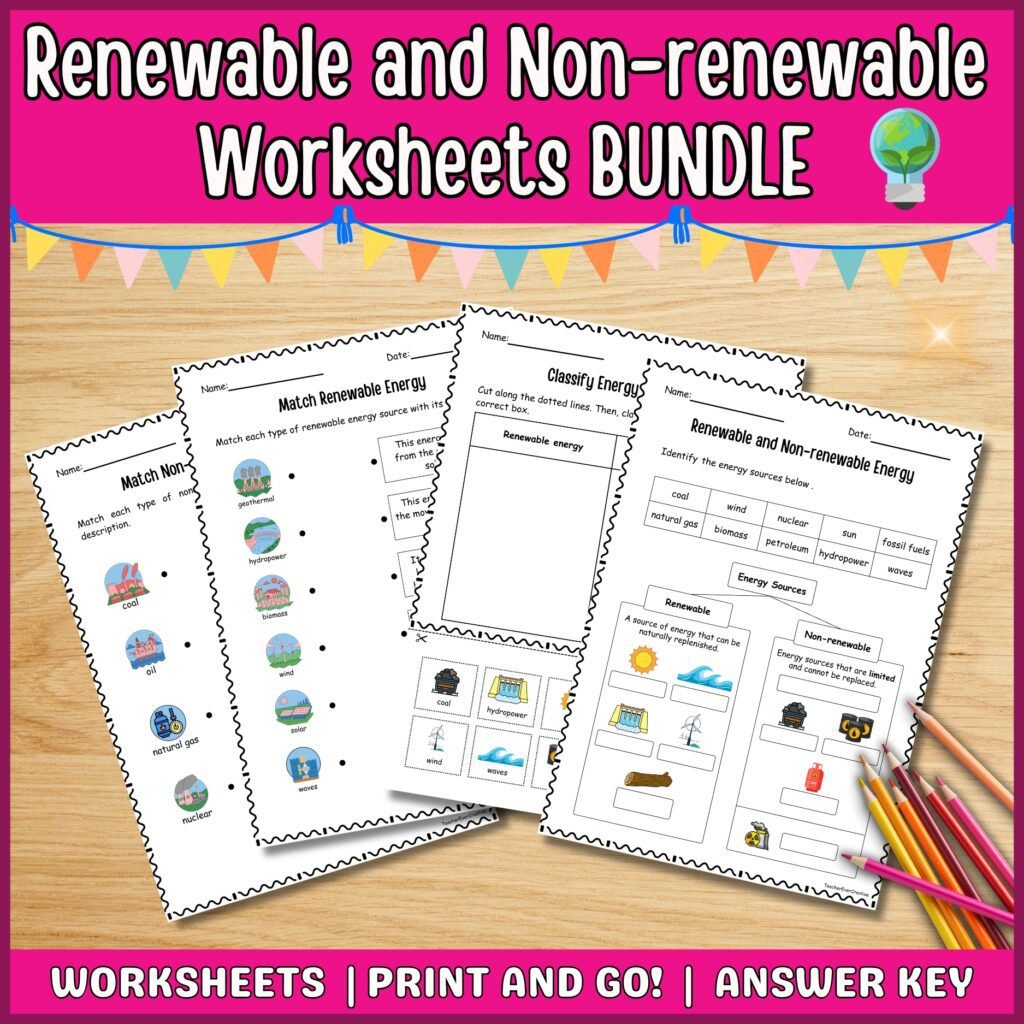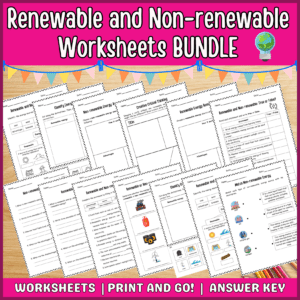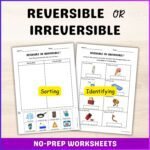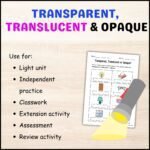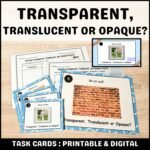Renewable and Non-renewable Energy Sources
Teaching Renewable and Non-Renewable Energy to Grade 3-5 Students
There’s no doubt that teaching renewable and non-renewable energy to young students (especially grades 3 to 5) can be exciting yet overwhelming. As an educator or homeschool parent, introducing these concepts in an engaging and accessible way sets the stage for understanding the importance of sustainable energy. In this blog post, I’ll share some tips on how to teach renewable and non-renewable energy effectively, along with a brief lesson plan for educators to follow.
Lesson Plan Overview:
Objective: To introduce students to the concepts of renewable and non-renewable energy sources and their impact on the environment.
Materials Needed:
- Visual aids (such as posters or diagrams)
- Interactive activities (such as sorting games or experiments)
- Access to age-appropriate resources (books, videos, online or printable resources)
Lesson Sequence:
Introduction:
- Begin by engaging students with a discussion about energy sources they encounter in their daily lives. Ask questions like, “Where does our electricity come from?” or “What fuels our cars?”
- Introduce the terms “renewable” and “non-renewable” energy and explain their meanings in simple language. Use visual aids to illustrate examples of each type.
Interactive Activity:
- Divide students into small groups and provide them with cards or pictures of different energy sources.
- Ask them to sort the cards into two categories: renewable and non-renewable. Encourage discussion and reasoning as they make their choices.
Discussion and Explanation:
- Facilitate a class discussion based on the students’ sorting activity. Guide them in understanding the characteristics of renewable and non-renewable energy sources.
To deepen their understanding, use follow-up questions such as:
- “Why is it important to conserve non-renewable resources?”
- “How can we use renewable energy in our daily lives?”
- “What are the advantages and disadvantages of using renewable energy?”
- “What are the advantages and disadvantages of using non-renewable energy?”
- “How does the use of different types of energy impact the environment?”
Hands-on Experiment:
- Conduct a simple experiment to demonstrate renewable energy in action. For example, use a solar-powered toy or a small wind turbine model to show how sunlight and wind can be harnessed to generate electricity.
- Allow students to observe and interact with the experiment, prompting them to make connections between the concepts learned and real-world applications.
Wrap-up and Reflection:
- Conclude the lesson by reviewing key concepts and discussing ways students can incorporate renewable energy practices into their lives.
- Encourage students to reflect on what they’ve learned and ask them to share one thing they can do to help conserve energy and protect the environment.
Understanding Renewable and Non-Renewable Energy:
Now that we’ve covered the basics of how to teach renewable and non-renewable energy, let’s delve deeper into what these terms mean and why they matter.
Renewable Energy: Renewable energy sources are natural resources that can be replenished or regenerated over time. Examples include:
- Solar energy: Harnessing sunlight to generate electricity through solar panels.
- Wind energy: Using wind turbines to convert wind power into electricity.
- Hydropower: Produced by the movement of water through turbines in dams or flowing rivers.
- Biomass: Derived from organic materials like plant and animal waste.
- Geothermal: Comes from heat stored beneath the Earth’s surface.
- Wave Energy: Harnessed from the energy of ocean waves using various technologies to convert the kinetic energy of waves into electricity.
Non-Renewable Energy: Non-renewable energy sources are finite resources that cannot be replenished within a human lifetime. Examples include:
- Fossil fuels: Coal, oil, and natural gas formed from the remains of ancient plants and animals over millions of years.
- Nuclear energy: Produced by nuclear reactions, typically using uranium or thorium.
Critical Thinking Questions:
To encourage critical thinking and further exploration, here are some follow-up questions for students to research and discover:
Renewable Energy:
- How does solar energy work, and what are the different types of solar technologies?
- What are the environmental benefits and challenges of wind power?
- How does hydropower impact aquatic ecosystems, and what are some alternative forms of water-based energy?
Non-Renewable Energy:
- How are fossil fuels formed, and what are the environmental consequences of burning them?
- What safety measures are in place for nuclear power plants, and what are the risks associated with nuclear energy?
- How do non-renewable energy sources contribute to air and water pollution, and what are the implications for human health?
Conclusion:
Teaching renewable and non-renewable energy to grade 3-5 students is not only an opportunity to impart important scientific concepts but also to instill a sense of environmental responsibility and sustainability. By providing engaging lessons, hands-on activities, and thought-provoking questions, educators and homeschool parents can inspire young learners to become informed and empowered advocates for a cleaner, greener future.

